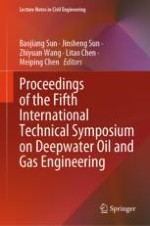2024 | OriginalPaper | Buchkapitel
Hydrogen Storage in Double Structure Hydrates with SF6 and TBAB Presence
verfasst von : Xinying Li, Yanhong Wang, Shuanshi Fan, Xuemei Lang, Gang Li
Erschienen in: Proceedings of the Fifth International Technical Symposium on Deepwater Oil and Gas Engineering
Verlag: Springer Nature Singapore
Aktivieren Sie unsere intelligente Suche, um passende Fachinhalte oder Patente zu finden.
Wählen Sie Textabschnitte aus um mit Künstlicher Intelligenz passenden Patente zu finden. powered by
Markieren Sie Textabschnitte, um KI-gestützt weitere passende Inhalte zu finden. powered by
